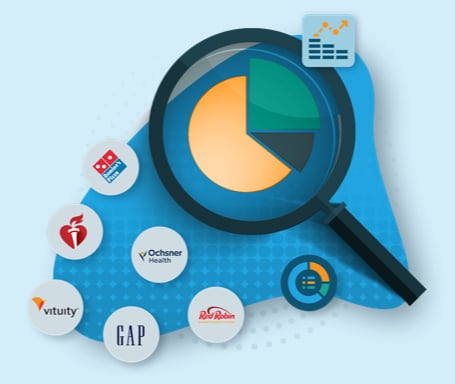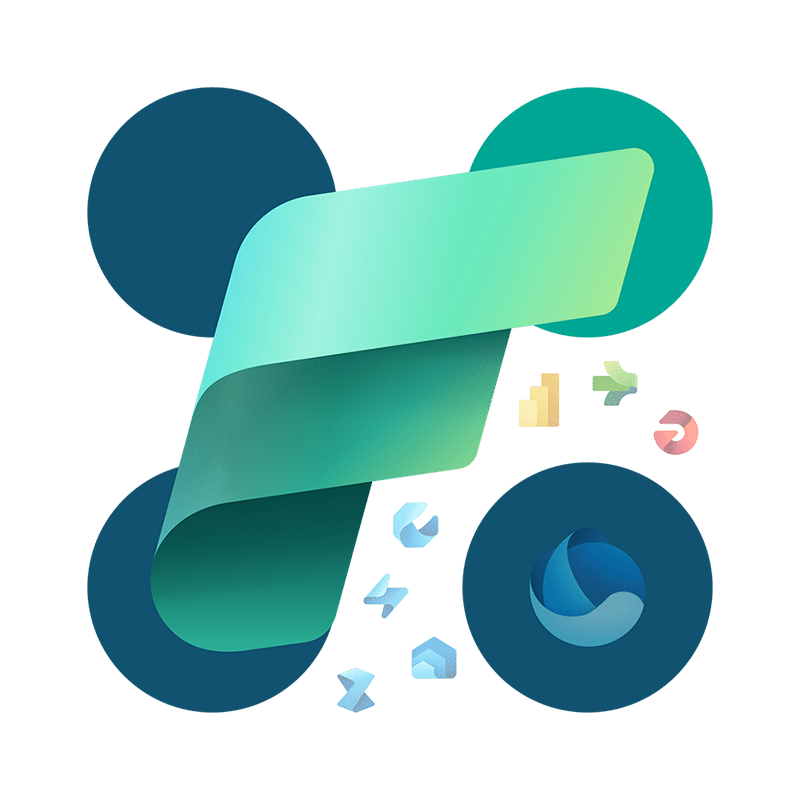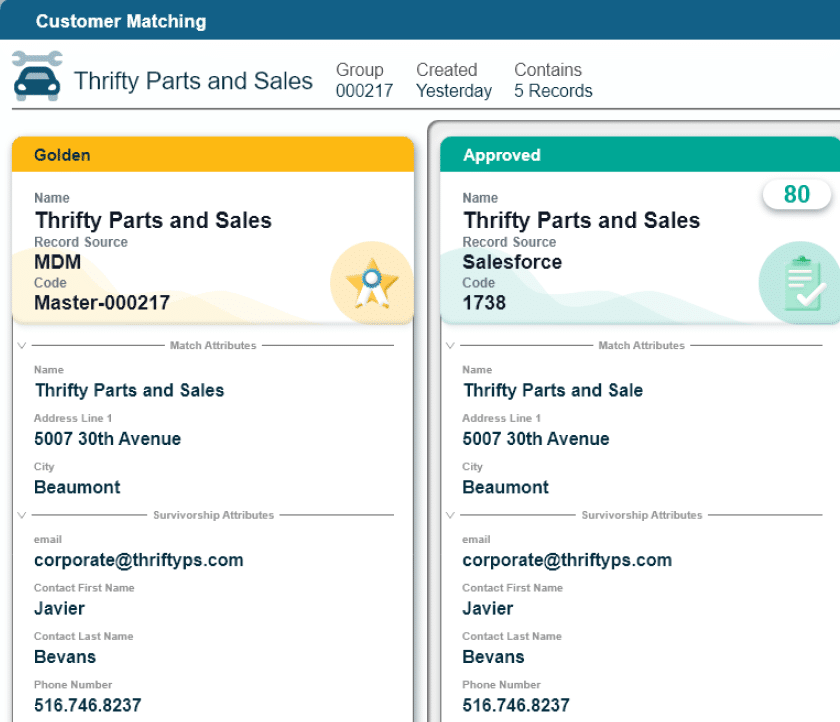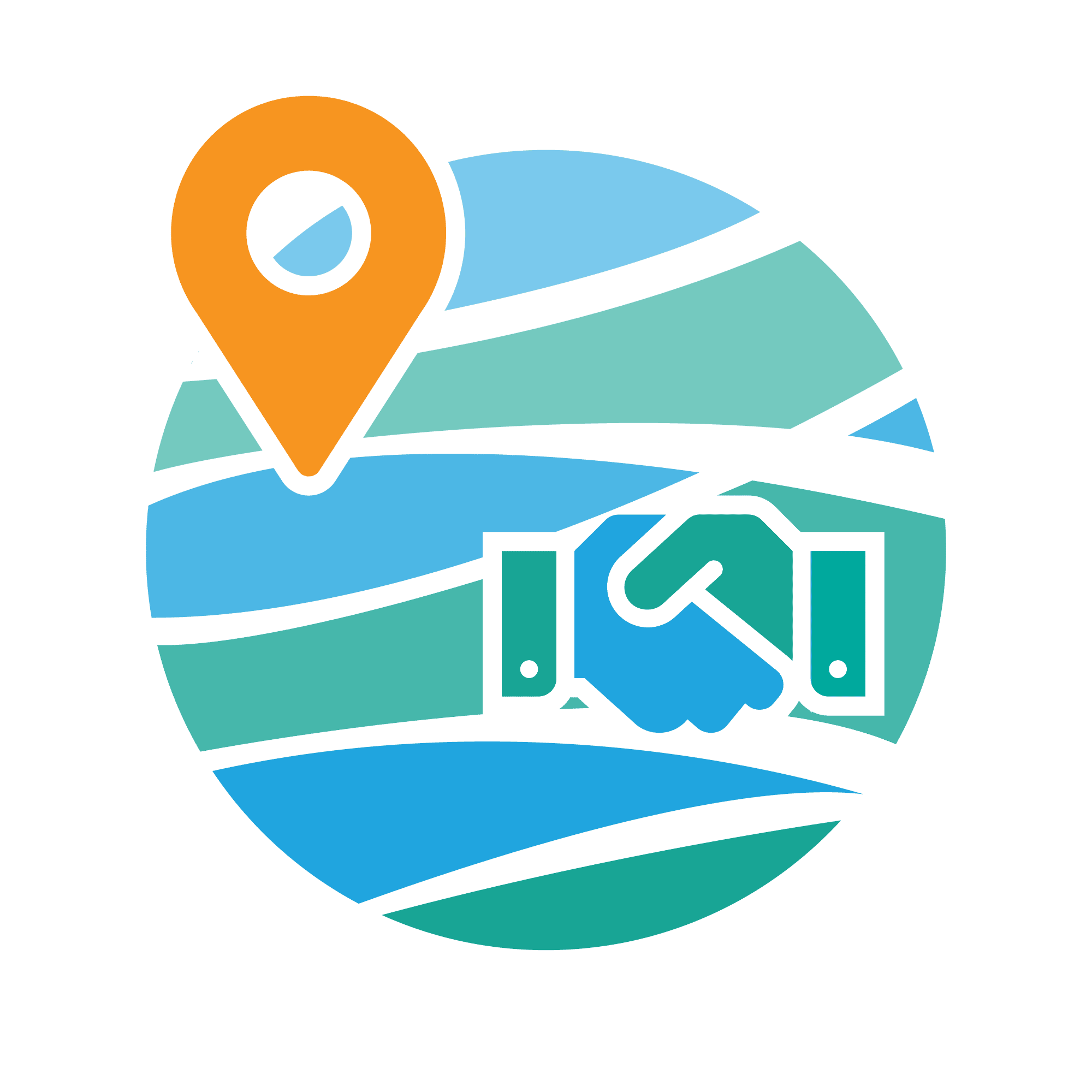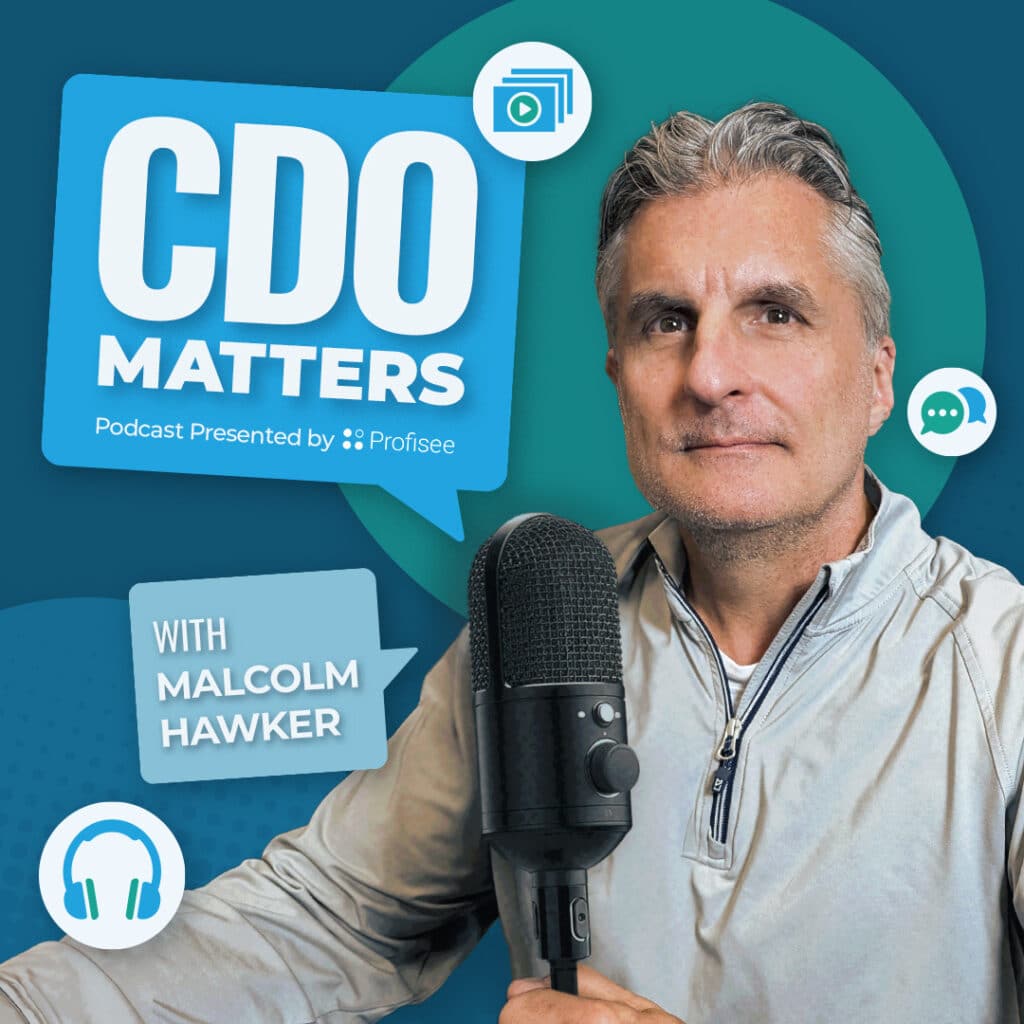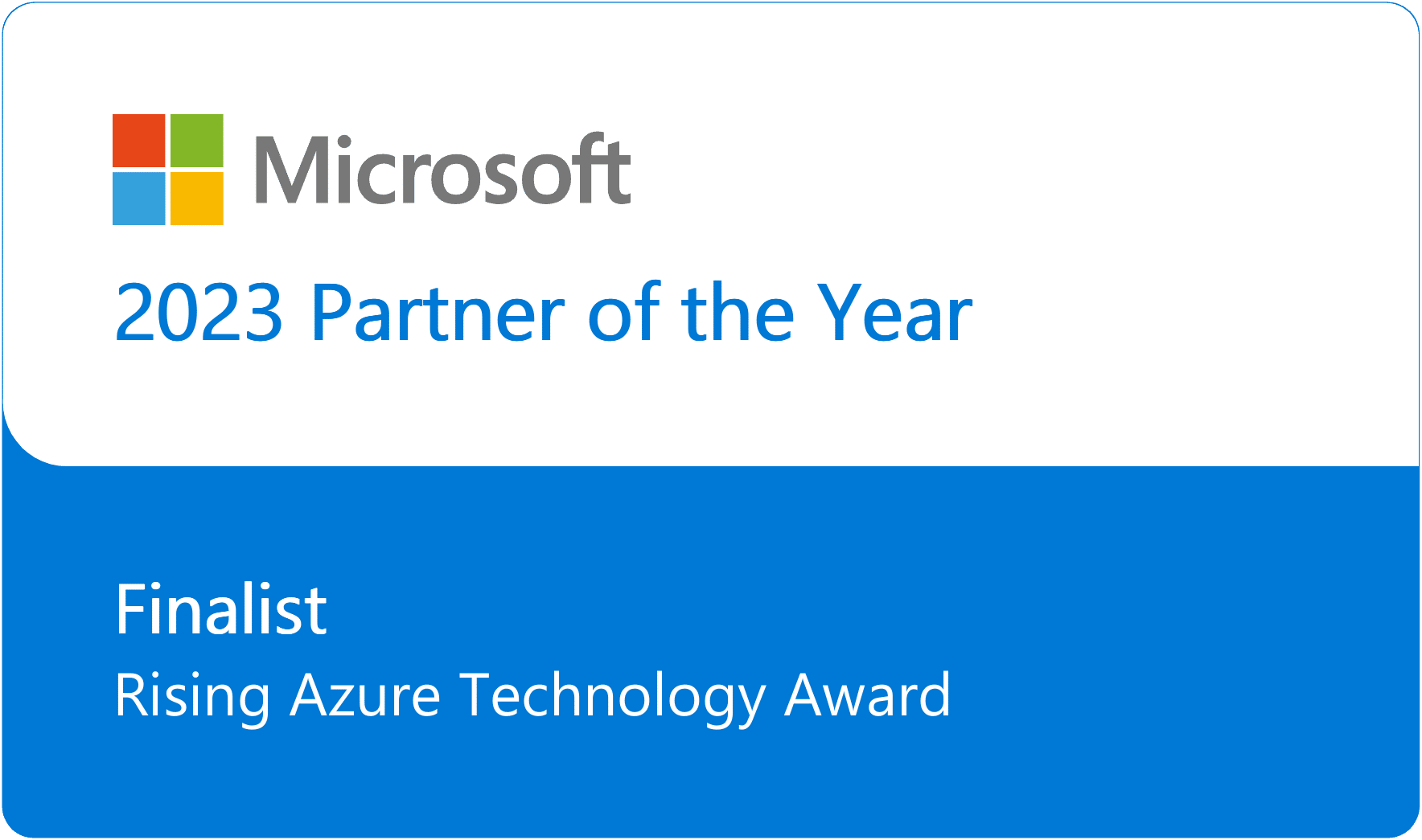Episode Overview:
Today, enterprise data is not only exponentially growing in volume, but in sheer complexity. And how can today’s data leaders extract value if they are unsure where to even start?
In the latest episode of the CDO Matters Podcast, host Malcolm Hawker sits down with Ontotext Chief Marketing Officer Doug Kimball to discuss the wide-ranging applications of next-generation graph database technology.
Listen to Malcolm’s discussion with Doug to learn more about:
- The advantages of graph database technology in particular use cases
- How graph databases can reveal previously unknown relationships
- The speed advantage of graph technology when querying data
- How AI and ML will continue to augment graph technology and reduce human intervention
…and so much more!
Episode Links & Resources:
Good morning. Good evening. Good afternoon. Good whatever time it is wherever you are and wherever you’re listening to us. I’m Malcolm Hawker. I am the host of the CDO Matters podcast.
I’m thrilled you’re taking time out of your day to join us today.
I’m joined by mister Doug Kimball, who’s the chief marketing officer of Ontotext.
Today, we’re gonna talk about graph. What’s graph? Why should you care? You’re a CDO. You’re hearing a little bit about graph.
What do you need to know?
Why is it different? Why was it all the bud buzz at a lot of the industry events you may have been attending recently? So that’s gonna be the topic, and I’m excited to dive into this because, frankly, I wanna learn more. I think I’ve got a reasonably decent understanding here, but I’m looking forward to learning some more.
I met Doug. I think I first met you. I I wanna say when you were at Stibo Systems and I was your analyst at Gartner, I we may have met Watertimes before that.
I think that was our first our first, action call. I think. It’s hard to Yeah.
Yeah. So that would have been maybe almost three years ago now. So so Doug was pre previously had a company called Stibo.
Some people say Stibo. I’ve heard others say Stibo.
I’ve heard everything in between. Yes. And it and some people forget the systems part too. So, like Yeah.
What so but what did the what did the, like, the the Stibo Stibo people actually say?
What do you think?
Stibo. Stibo.
Okay. Well, it’s a Danish company, so I would assume that it would be a hard I. Right?
Right.
It’s deep. Yeah.
So first met there. I had a relationship because I was your analyst at Gartner. Yep.
And we had many briefings and many inquiries, and now we’ve both moved on. So thanks for coming. I really appreciate it.
I’m glad to be here. I mean, it was fun to actually put a face to the name when we met in Orlando too, so that was kinda cool.
Yeah. Indeed. Indeed. Yeah. And, of course, of course, with me. I don’t know, but I can’t speak about you, Doug. But for me, it was in you know, I ran into people in the bar.
But I it’s like a Sunday night, and, it was you, me, Cindy House, and and John Thompson Right.
Which is a bit of a ragtag kind of LinkedIn crew. I don’t know.
I don’t even know how that all came together, but it was I felt like I was surrounded by day data royalty.
It was kinda fun.
Well, it’s yeah. Exactly. Exact well, especially John and Cindy. Right? It’s like Yeah. Yeah. Great way to describe it.
Right? Like like, data royalty.
John’s, like, written, like, a hundred books, and Sydney’s been written books and been around. Your ex Gartner analyst is as well, but, like, really well regarded, like, everything she’s ever done. And and there’s there’s you and me kind of, you know, batting maybe a little bit of cleanup. Or I can only see that for myself.
But Yeah. But, anyway, yeah, it was, it was a good event. So speaking of Gartner, I had predicted this in advance, and I think I was largely correct, but I heard a lot about Graph at Gartner. I heard a lot of Graph at the last Gartner, and I’ve been hearing more and more and more about it.
Doug, give us the eighty thousand feet CDO, CIO.
Well okay. So first of all, tell us about OntoText because I I want I wanna hear about more about your company, what you do. And then from there, give us the elevator pitch of of Graph.
Sure. That sounds good. So, yeah, Doug Kimball, as we’ve said before, the chief marketing officer at Ontatext.
The name may be less well known than what it is we mainly deliver, which is Graph DB. So sometimes we hear Graph DB, oh, that’s the company. So we are a knowledge graph company. We’ve been around for twenty plus years focusing on semantic knowledge graphs, doing a lot of different things, a lot of different modules into that.
So, pretty excited to take the background I’ve had in data management throughout the years, which before civil systems with Nielsen company, UCCNet, etcetera, and just see how it all comes together, which has been pretty exciting. So, and the same. When I was at the the Gartner conference and cover I was just at a conference this week in Chicago, a medical conference, and graph and knowledge graph and semantics and ontologies, which I never heard that word until I came here, are getting a lot more buzz and metadata. We we we forgot to talk about metadata.
Sure. I’m hearing more and more about metadata at these conferences we’re going to and the inquiries we’re we’re getting.
So that’s where I think the interest in in graph technologies is coming in. So looking at that hat of how do I explain what they are, graph technologies are a way to store data to manage the processes of connecting all these and putting it in more of a graphical way to represent the data. We’re we’re so used to relational databases. We got this nice little ordered table. What if you have more than one data source?
Most likely, anybody we’re talking to has more than one data source. So knowledge graphs are really sorry. Sorry. Graph database, let’s start there, are very, very good at representing the connections between all these different data sources and then understanding the relationships between them. So it’s now you you bring data together to have information, not just a bunch of the stair you know, different data points. So it’s from a you know, the CDO hat I’m looking at, you’ve got complex data, complex technology, complex systems.
How do you wanna represent that data in a way that can show and manage those relationships most effectively?
That’s one of the key things I look up in graph.
So so okay. So it’s not rows and columns.
Right? Like, that’s that that’s old school, tabular, rows and columns, traditional database management systems. So so it’s not that. It’s a way of managing data. So I I heard I heard two things there. One is a way of kind of managing data and and persisting data, a way of storing it and and and how it would be stored as, I assume, is is this collection of of relationships.
That’s one thing that I heard. And the other thing that I heard is another way of displaying it, or visualizing it perhaps, which is a little more node based or hierarchically based. Is would you agree with what I’ve just said?
Yeah. No. And and, you know, collecting the node, you know, there’s nodes and edges. So you got nodes that describe data, edges that describe the relationships between them.
And some of graph databases have visualization elements as a part of that. So when you put visualization tools also in so it depends. There’s a lot of different ways you can look at a graph database and a graph graph system to pull that together. But no.
It’s you know, the best way to look at that again with tabular data, you really can’t represent many to many data relationships very effective. You know, maybe you create this whole ten you know, this tabular one, and you try to stuck another tab. It doesn’t work. How do you make those connections?
So when you’ve got many to many or even many to many to many relationships, graph databases are the the only way to go.
So when you say relationship, I assume that could be anything.
Right? Like like, it could be a relationship, like a an interpersonal relationship, familial relationship.
Right.
But I think the relationships you’re you’re talking about here could be anything.
Like, as as a as a rivet relates to a pair of jeans or as a door handle or a car handle relates to a car. Right? It’s anything like that.
And you could extend that to to also now prevent confusion. So rivet, you know, can be a part of a jeans, or a rivet could be part of a building information management system. Because now you have to understand where does that rivet, those particular measurements, in this particular case fit into that particular part of a building information management system, and where else is that rivet being used, What other parts go to that rivet? So now you’ve got multiple connections.
So but you also have to have the ontologies, the knowledge on top of that to understand that a rivet used in a building is very different from a rivet used in a pair of jeans. But you can take the jeans example the same way. There’s blue jeans, dark blue jeans, what kind of chemical wash was used, and now you get these complex relationships that you can only represent effectively, represent and also query effectively in a graph database.
Okay. So we’ll we’ll talk about query in a little bit, because because I think that’s that’s a that’s a part of this, and it starts to get into skills, and it starts to get into to to what you need to know to to to actually deploy one. But let let’s talk about the data a little bit more. You talked about, like, these edges, connect connecting connecting the nodes.
So the edges would describe the relationship. Do they do they describe, like, anything like, the the strength of a relationship? Do do you know what I mean? Is there is there is there a way of of saying this one is strongly related to another based on, like, how many times this comes up in a in a dataset?
You can you can you can attribute so you can put attributes on them and processes that relate to that.
I’m trying to think back to what I’ve done with research in RDF to understand if you can do it from that perspective or not. I’m not a hundred percent sure if you can build the strength on that. So I’m probably I’m probably missing in my education.
So I I think the answer may be yes.
It was leading the business just just a little just a little bit because if it if that relationship shows up a hundred times Right.
In a given dataset versus one time in a dataset, I mean, there there’s some there’s something that is useful there, right, about that it would say, okay. This happens a lot. Right?
And that’s where things like fraud detection become a very good Exactly. Yeah. Graph databases because if it if Malcolm Hawker keeps showing up all these different bank accounts in Florida, which would make sense, the Tennessee and other places. Now it doesn’t start to make so much sense. And now knowing I’m in the area of Oklahoma, Malcolm Walker opened one up in Oklahoma where I live.
Right.
The graph database goes, wait a minute, and there’s It’s not all.
Straight to that. If he opens up one Right.
Yeah. That’s right. So you you’re kinda dovetailing into the bet the the the use cases here that are that are really well supported by graph. So and what I’ve seen over the last few years is that what what I’ve been told is as far as I know it, the graph is not necessarily that new per se, knock knock. Right.
But the the use cases that it is very, very good at have really kind of exploded, particularly around the digital transformations.
Would you agree?
Definitely. I mean, I think that the easy one, I I’m sorry to bring it up, is chat Have you heard of it?
Good one. No. No. No. No. Everybody’s talking about it. We should talk about it too.
We don’t wanna be left behind.
And large language models. So I I I always like to bring it up is because I think it graph has now gone starting to get into mainstream adoption. And now people understand it. So when I when I first take my job and try to explain what the heck it is that I do, which I’m still figuring out, I think, is I said, have you used Google? You know?
Duh. Have you used, you know, anything like, you know, to DBPedia or Uber? All these things that have that graph technology that’s embedded in all that. Oh, you start to nod the head.
Filters are starting to realize what graph technology is. I think things like chat chat g p t, generative AI, large language models, all those things. I mean, I the show is up just out this week. I saw at least five or ten billboards.
They looked at hard that said AI, generative AI, or or GPT capabilities built into their thing. So that, I think, raises the understanding that this stuff this data stuff apparently is really important, even more to even more, you know, average people. I hate using that term.
Well, so I I don’t think I know what the underlying data model is on chat g p t. I mean, I I I it’s open source. Maybe I should.
I don’t know. But I I think you’re you’re using that as an example to express kind of the power of of relationships and how words or phrases might relate to to each other.
When when it comes to kind of deploying, is is it is it common for your clients? I mean, this is not this is not an all or none. Right? It’s it’s not like I need to go flush my entire whatever million dollar investment in traditional database management systems and traditional persistence. I mean I mean, I assume that for a lot of your clients, this is a net new deployment for a net new use case. Correct.
And those and those databases don’t go away. You’ve you’ve got, you know, organizations have invested massive amounts of money in these databases. That’s fine. But can all these databases be connected?
Going back to the the other query kind of thing I’ve been touched on, can you get the information out of all these different disparate systems? And I think that’s where it’s really important. By the way, I wanted to touch on something. This is related, so try to keep me in my guardrail somewhere.
One of your most recent podcasts you were talking, you made a reference to, log data, all the log text data that gets captured.
And that’s kind of a treasure a treasure trove of data not being used. That’s where I think things like graph databases and text analytics come into play because it’s structured and unstructured data. So you have all these log files sitting there that probably have useful stuff, but we can’t get to it unless we can connect it, analyze it, query it, etcetera. So go ahead. Go ahead.
Well, no. No. That that makes sense. Particularly where there are underlying if you were trying to understand underlying causal relationships.
Right? Like, a a happened and b happened and then c happened, or a was related to b, which was related to c, which shared a common relationship to f. Mhmm. Like, to me, like, troubleshooting and understanding causal relationships of what may otherwise, includingly, increasingly be called data observability.
Sounds like these are perfect use cases for this where you were trying to understand patterns. This gets back to chat GPT and LLMs. But you’re trying to find patterns in data that wouldn’t necessarily be there in a traditional database model. Is that is that correct?
And that yeah. And then that that pattern analysis, I think, is so important. I mean, you know, probably, I mentioned fraud detection briefly, but, you know, what’s called target discovery or drug discovery depending if you can use the word, the formula discovery. Look at all the if I if if I have treated Doug with this this medicine, he reacts in a certain way, what other patterns of things are going on?
Was Doug recently in a hay fever heavy state, or are you drinking too much coffee, or neither of which are true? But it understands those patterns. And now if there’s an adverse reaction, maybe you can you can understand that better. The flip side of those, if you’re bringing a new drug to market or making a change to an existing drug, repurposing it, look at all the patterns of interaction that might be happening with this.
Is this person having, you know, allergies to dog? You know, making things up on the fly here, but that kind of a pattern analysis, you you cannot do in a relational.
But Right. If you’ve got all the information for about, you know, the drugs here in this relational database and that one in here, that’s good. Now you connect them. And I think one of the things you’re asking about also is is this all or none?
What we’re seeing a lot of is that, you know, companies, they start off with a project around a knowledge graph.
What the the best way to do it from an enterprise standpoint is think, okay. This project then grows into a practice kind of a concept. So it’s not just a one off. You’re just solving one problem, which which you can do.
But I think as people are seeing in the fact that I can connect my knowledge graph to everything else and or multiple knowledge graphs, how much more power can I do by having all this data brought together and not just, you know, a one off solution? So, hopefully, that’s where your what your where your question was, that one.
Yeah. I think I think getting back to the kind of these kind of complex, like, patterns and kind of maybe I shouldn’t say causal relationships because these there’s there’s there’s no causality that would be inferred here. It’s just it’s just inferred correlations. But Right.
Like, twenty years ago, I I think, you know, you could figure this stuff out, but you’d be running, like, reasonably, you know, expensive, regressions in SaaS. Right? Mhmm. And and to try to figure this stuff out. And now you can go run the graphs and say, there may be something here that I need to go take a different a a look at, or there’s there’s a pattern here I didn’t know about or to to your point about fraud.
I mean, I could see a ton of use cases here in in just loosely the the digital world where you are trying to do things like understand, you know, buyer behavior or even, like, website optimization. Like, what what are people clicking on? Are there patterns that people click on and then then abandon like a sales process? So, I mean, use cases here are endless.
That’s that’s what I see. I mean, where where where where we’re coming from, we’re we’re going for certain verticals. To me, this use case, it’s horizontal. Anybody I hate to sound like a that’s a quote I use with Scott Taylor’s book, actually.
Anybody who has data has data problems. Yeah. It’s true. Anybody who is using more than one set of data sources to do anything to serve their end customer of some sort could benefit from using knowledge it’s really graph technology.
And, honestly, knowledge graph and graph technology are related, but they’re the same thing. But anybody who has that need to solve multiple data problems, it fits in. And one of the way one of the ways, by the way, I often explain if I’m really at the very, very high level, I’m really like a CEO or a CMO, is the six degrees of seven of of Kevin Bacon game. Right.
Because that’s really what this is like. It’s using those six degrees of things. And if you have, you know, to your point, you’ve got a customer going on an ecommerce site wanting to buy something. Hey.
Should I suggest this? Nope. They live in Alaska in December. I don’t wanna suggest flip flops to them.
So you make those relationships.
Yeah. Recommendation engines is a is a a huge use case here. And, you know, again, not not new, but the way we kind of approach it is from a data management perspective, I think is well, again, it’s not new, but we’re seeing gain increased prevalence here, which is which is kinda cool. The the whole the whole reason why I wanted to have this conversation today is is because, you know, I used to get a lot of questions, when I was at Gartner from from CIOs and CDOs. I’m like, well, hey. What’s this graph thing? What should I care?
You know, is this gonna cost me a lot to to rip and replace?
And the story that I always tell is like, hey. This is a two plus two equals five, and and you and you probably don’t want to rip and replace, not necessarily. So I’m I’m I’m I’m glad we’re on the, I’m glad we’re on the same page there.
When it comes to, query, right, you you’d mentioned query. Right? I mean, this this is a big deal, and and access of the data, that’s a big deal. You know, historically, it was SQL.
Right? And you need to know SQL to get at at at at databases, the rows and columns. In in the graph world, I mean, there’s an equivalent. Is there not?
Then I’m I’m not technically what I under have understood from the SQL standpoint, if you have to get past, I think, four or five joins, you have to do graph. Otherwise, the it because it’s not just the ability to query, it’s the speed of the query. And graph graph technologies enable the queries to be what a one much, much deeper so you can go many, many, many, many layers, but also significantly faster. Whereas if you try to do all this kind of queries, you know, multiple level queries in a relational, put the query in, go make a pot of coffee, go get some lunch or something, come back.
And so you get, you know, better decision making. You can solve your customer’s issues faster. All the things going to, you know, I mean, supply chain management. Right? My my other former world looking at the ability to look at all these different things that are going on with those same kind of queries. You know, where is this product in the movement? What’s happening to it, etcetera?
That’s the power. You you just can’t do that same kind of speed and, I guess, flexibility with relational.
Right. Well, one of the things one of the stories that I would tell often when I was at Gartner was around the world of what I would loosely call, you know, unknown knowns.
Right? Like, there are known knowns, unknown unknowns. And and I think that in many ways, Hadoop was a little bit of a a failure because it was the world of the unknown unknowns. Right? Like, you did you did you didn’t know what you were looking for, and you didn’t know that there would be novel relationships, or you didn’t know that there would be novel correlations, but you would set upon kind of trying to figuring out the unknown unknowns. And sometimes, you would find some really, really cool stuff, but there was nobody in the business that was really kind of asking for it, or you had to go kind of back your way into a use case. You had to back your way into a business case.
In in in the world of graph, it is it’s it’s an unknown, which is which two things are related.
Mhmm.
But the known is is that there’s there’s relationships here. We always know that there are relationships whether it’s between people or products or or or anything. I mean, the whole world is a complex web of relationships. Mhmm.
So we know those things that we know those things matter. We just don’t know when a is related to b, at least from the perspective of an extremely large dataset. And this this is to me, this is another this is another difference, right, which is it’s pretty logical to assume that you would have customer a related to customer b. Right?
And and you could you could you could create a customer table and and try and and and model when customer a is related to customer b if you had commonality in a name, for example. Right? Like, those those are known nodes.
But what I think what I think graph can be particularly useful at is helping you understand where there are those things you didn’t actually know about previously.
Right.
Is it is it it am I making any sense here at all?
No. I well, as as always, but, that was a little little hand rig to the ego. No. I know.
And and I I remember the known and the unknown part from our our many conversations ago. I I think where I would extend that a little bit is the reasoning ability that you get with because there’s two main kinds of of of graph technologies, property graph and and RDF, resource restriction framework. The cool thing I think with the RDF is that ability to do that stuff you didn’t know. So you, you know, you put your ontology, your knowledge on top of your graph your graph database, run it through there, and it goes and makes all these connections.
And then it starts to say, well, you know, Malcolm and Doug talked. Malcolm used to work at this, you know, this analyst firm. Doug used to work this company. It’s and it starts to make that I I I call it bonus data because Doug likes to make conceptual noises.
But you can get, like, basically, twenty to thirty percent more information than you had because of that inferences, because of that reasoning, that to me is just really slick. Because now you’ve got the unknown knowns that you didn’t even know that somebody that the technology is stitching together for you. Hey. Did you know these things exist?
So it’s presenting it has the potential to present those unknown unknowns if I use your Yeah.
Stitching said like a true marketer.
That was always one of it to me. That was every time I ever heard that word, when I was at Gartner, stitch. I knew I was talking to a marketer. Yeah.
It it’s it’s it’s interesting. It’s it’s how it’s it’s marketer speak for kind of integrate or Right. Or or aggregate. Right?
Like, bringing two things together is a marketer would use the word stitch.
It was the same thing anytime I would get inquiries related to customer data platforms. Mhmm. Instead of MDM, people would would would refer to stitching. And I and I knew it was like, oh, man.
Marketing. We it’s it’s it’s it’s a versus relevant point. Yeah. Go ahead.
No. No. No. I mean, it’s just it’s just like, we live in a world of semantics.
Right? And and and you’re selling this thing that is a semantic graph that that links Yeah. You know, verbal, you know, or written concepts. I mean, you know, communicating concepts together, and it it just I just find it kind of, I don’t know, ironic’s not the right word.
I don’t know. I find it curious that, in our world of semantics, we have such a hard time Explain it. Semantics.
Right. Yeah. I agree. And and I I’ve gone through recent inquiries where they’re talking more about, you know, this this stuff is being risen risen, rose, seen more by the business audiences with the business leaders. Right. So we’ve gotta find that way to explain it in a fact that doesn’t talk about JSONs and SQL joins and now it talks about, you know, why you care, what’s the impact to your business, what does this do for you. Not that they have to understand intricacy intricacies of graph technologies, but why you do it, and why you go to your your CDO and go, can you fix this problem?
Great use case. Great use case. Or I could I should say, great segue into use cases. So from a business value perspective and why you should be doing this. So we talked a little bit about how it can be used to create kind of and and visualize and understand novel relationships and and manage and and structure data in a different way that’s more flexible and more powerful and dah dah dah dah. I’m a CDO, and I’m intrigued.
I’ve been given a mandate to go solve for a digital transformation, and my list of stuff to do is, like, this long.
Mhmm.
Right? Maybe it didn’t even include launching an ecommerce site. Maybe it didn’t you’ve even includes things like supply chain optimization. I’ve got a lot of work to do here. I’m a CDO.
I’m intrigued. Where should I start? It it I and I don’t know if that answer makes any that question makes any sense, but but what would you recommend?
I I’ve had I would first recommend figuring out what is the most prevalent in use cases to get you the most exposure. Because if you’ve got a long list and somebody’s giving you a lot of money to do this, they’re gonna wanna present some kind of a sick early success story to say, look. It’s stuff that’s actually working.
And one of the easiest ones might be saying, what are you working on that has an AI or a machine learning component to that? Because, again, that’s got the the hot buzz and everything.
And figure out what is the the first step to take in that journey. Because digital transformation, digital enablement, there’s as you know, but I do. There’s zillions of places we could start.
My kind of conversations are usually around what is gonna get you the biggest bang for the buck, And then ensure whatever you’re doing with that is also gonna be part of the same foundation that you build for everything else. So Yep. And and, you know, it’s it’s a somewhat generic answer, but to me, we’ve gotta get them going from, where do I start? To just pick a place that makes the most sense to start that gives me the ability to pivot and to change from there, use my existing data architecture, if I need to bring in other data technologies.
What’s this way you do to make this more of a comprehensive approach, but figure out that starting point?
Yeah. Whether that is a recommendation engine, whether it’s understanding risks in your supply chain, whether it’s building a new fraud model for a bank. I mean, the the list here is very, very long.
Right.
I think that, to me, those are the, like, the overt business value use cases. Totally agree you should be focusing there. But you also talked about building a foundation.
And this is a great dovetail into, the most recent version of our podcast. But the recent episode we just published was me talking about the data fabric.
Mhmm.
And there’s there’s absolutely connection here because you talked about metadata.
And at least according to Gartner, I think that there are more approachable ways to describe the data fabric. And and, hopefully, the most recent episode of this podcast does that, and, hopefully, you’ve already watched it or listened to it. And thank you if you did.
But where I talk about how you know, what Gartner calls metadata activation is is in essence, not exclusively, but in essence is running graphs against data to understand where these complex relationships exist.
So to the point about kind of, you know, starting on a kind of high profile use case, we talk about those, but then actually getting into foundational stuff, data fabric, literally, Doug, in the space of two months, I’ve gone from, maybe. You know, this is interesting. It it’s there. There’s there’s a there there. There’s some there there’s this is cool, but we’re, like, seven to ten years away from mainstream. In the span of two months, I think we’ve gone from seven to ten years from main mainstream to, like, maybe two.
Wow.
Right. Be be be because of what we’ve seen with chat GBT. This is just my this is just my perception. The story that I’m telling, and I think your technology and other technologies like it will be, we could say, maybe the beating heart of some of these solutions.
Mhmm.
The story that I’ve been telling is is if OpenAI, granted well funded by Microsoft and people with really deep pockets, so that aside, if they can use the entire Internet as a training set, right, the entire Internet as a training set, companies could certainly be using their entire data estate as a as a training set.
Right? Like, where you could be asking questions of your own data.
Hey. What’s the best integration pattern? Right? Or what what what what should my data quality standards be to guarantee eighty percent accuracy on customer data?
I would argue that’s that will be in that future will be enabled, not entirely, but partially by these large scale graphs. So when it comes to AI, I mean, have you guys been having meetings recently about, you know, what’s what’s our AI kind of war plan here?
Because this is what everybody company I’m talking to these days is having them.
Yep.
Yeah. We we we we we’re a company founded by engineers. These these these people these people just love to think, and they dive straight into it. We actually had an ongoing project to connect our knowledge graph to our own internal datasets. We can do, like, kind of querying, which is pretty neat.
In in Bulgaria, where the company’s founded, we call that eating our own dog food. So we’re using our own tool to do what we should be doing for our we’re we’re doing for our clients as well. It was interesting. But as soon as as soon as we actually, before GP chat, TBD got kind of the the big buzz, we had people behind the scenes working on APIs to say, how how do we connect that into our systems?
How do we do this? And the results I’ve seen come back. It it’s you know, I’m I’m glad I’m not out of a job yet because it’s really and they’re looking at it from you. How do you ask them the right questions to get the right messaging back?
But it’s and I used to the same thing when we talk about it. It’s impressive. I mean, it better than I than I expected. I know you had the the queries where you ask questions.
They came back with answers like you would provide as well.
But looking at it from a company standpoint, I think one of them also to your point about data fabrics, and we can stitch them together so I had to use the term again.
Stitch. There you go. Yep. Yep.
Is the is the individual ones, we’re making your data you know, you’re now you can use it instead of querying the entire Internet. Exactly. Let’s just query and make it private. Don’t run into some of the challenges.
People have given, like, you know, my code away to chat g p t. Just point it at my stuff. Or where do your company stuff? I think I agree.
That’s it it takes the mindset of SharePoint and puts it on not even steroids. Steroids, supercharger, turbo.
Now I can find anything I needed to find anytime just by asking a question.
SharePoint plus Google plus added goodness.
Yep. Yeah. Alright.
It’s it’s it’s all of the added goodness, very technical term here on CDM Matters.
But it’s I think it’s I think it’s all of the things that kind of original thoughts around intranets would actually be. Right? And now and now I think it actually could be. Right?
Like, where where you would have ins immediate instant access to every email and every not just every email or every Word document. I mean, every every, you know, insights gleaned off of log files or customer service interactions or successful deliveries of your your goods. I mean, the list here is just incredibly long, but, like, again, I don’t think anybody would have thought I wouldn’t have thought a year ago that that we’d be having this conversation right now, but I think I think that’s I think that’s really kinda where we are because the innovation here is happening at blazing speed. So
Yeah. It it’s it’s good to hear that you’re talking about this. I I didn’t know that eating your own dog food was a uniquely Bulgarian, phrase. Yeah.
But yeah.
That’s what I’ve been told. Yeah. And, you know, they they got a lot of lot of cultural pride, which is awesome. But I I wanna I wanna touch back on the supply that you mentioned the supply chain delivery thing.
Just Yeah. The least nice time I use cases is gonna be we you’re gonna do another way to talk about this. And imagine I’m a, you know, high end retailer. I’m gonna send you a brand new, I don’t know, camera, because I know you like cameras.
You like taking photography. Right. And I could do if I had a good system, I could do a quick oh, that’s beautiful.
I’m a Nikon guy.
Yeah. That’s awesome.
Oh, Nikon, I should say. Sorry. Go ahead.
It’s like it’s like Porsche Porsche? I wanna send you the brand new brand new camera, and it’s really expensive. I wanna find out how often is mister Hawker home when he has deliveries in the month of June. K?
Which doesn’t sound like it’s that difficult of a question, but now you’ve gotta bring in June. You have to bring in, you know, the fact that the driver entered the information into tax, you know, handed the the package off to mister Hawker, etcetera. Now you start that is just a simple example. But now I’ve got the confidence I can ship that to you, and you’re going to get it and not lose it so I’m out more money.
That’s just one of the many ways you look at it from a supply chain a supply chain and ecommerce perspective and fraud prevention.
And It says it well, that one is a is a great example because it’s borderline creepy.
Right? But but it it’s a great example because it’s also, like, on one half of the of of the of the creep spectrum, it’s, okay. Wait a minute. They’re they know when I’m home and I’m not home.
The other half is, wow. That’s customer centric. They know they they that that it just shows up when I’m there, and I don’t have to, I mean, go to the go to the FedEx depot to go pick it up or whatever or or have stuff sent back. I mean, I travel a lot for work.
That happens all the time when stuff gets sent back and it’s being held. I mean, like Mhmm.
So that that’s a that’s a really, really great example to show, some of the power of some of the things we could do here.
But, you know, obviously, I have to figure that one out because, probably a better way to kind of market that that one. Yeah.
Probably less uncle creepy and more customer service.
Yeah. Yeah. Yeah. No. But, I mean yeah. It’s it’s it is really, really exciting. It’s equally scary as well.
I mean, I don’t know if you’re following a lot of conversations online, but, it’s like, at least, you know, people my age are like, wow. This is amazing. This is transformational, and holy cow. This is also really scary.
But Yeah. That’s the that’s the AI thing. I think it’ll be some time before everybody kinda figures it out figures it all out.
But, We grew up watching Skynet and Terminator, so, you know, you you start to wonder.
Well, yeah. I’ve been watching a couple, interviews recently with with Elon Musk, who probably is is having a good stiff drink give right now, given his rocket just exploded, down in Texas. But where, like, you’d think that he’d be, like, the last guy talking about AI regulation, and he’s openly out there talking about the need for AI regulation, whatever that means. I I I don’t I don’t even know, but, like like, wow. Because some of the things he said is like, you know, we’re getting we’re fast approaching to the point where we think we’re manipulating the machines, but it could actually be otherwise, like now.
Yeah. That that was my my point. You know? What happens when AI starts to talk back about us?
Or did this actually happened.
I don’t know if you recall this happened. This happened, like, two to three years ago where they start talking back to us, but in a language that they’ve invented that is more effective than English.
Right? This actual this actually happened. I I wanna say it happened at Google where where they where somebody had written an an AI protocol to speed up the productivity of something, right, between these two systems. And what they ended up doing was creating an entirely new language that we we we couldn’t even understand.
So they so they created their own language because it was way more efficient than English because they figured out that there were limitations in communicating in English. And they they yeah. But the computers had completely completed, like, they built their own language in essence, so we didn’t even know it. Well, we figured it out. But, like like, that’s the kind of stuff we’re talking about here, which is has nothing to do with graph, but it’s it’s it’s topical. So we we should probably end on that note. Doug Kimball, thank you so much for being here today.
It’s been our pleasure.
It’s been a lot of fun. I really appreciate it. Thank you.
Awesome. Well, so for everybody listening or watching, from around the world, thank you so much for catching another episode of CDO Matters, and we look forward to seeing you on another one very soon. Thanks all.
ABOUT THE SHOW
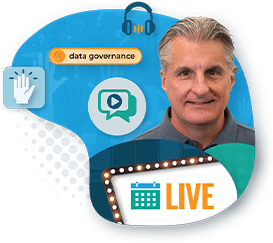
Malcolm Hawker

Benjamin Bourgeois
Ben Bourgeois is the Head of Product and Customer Marketing at Profisee, where he leads the strategy for market positioning, messaging and go-to-market execution. He oversees a team of senior product marketing leaders responsible for competitive intelligence, analyst relations, sales enablement and product launches. He has experience managing teams across the B2B SaaS, healthcare, global energy and manufacturing industries.
